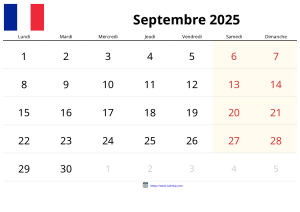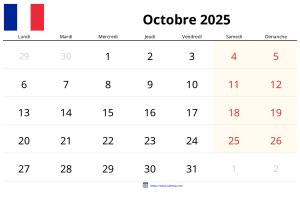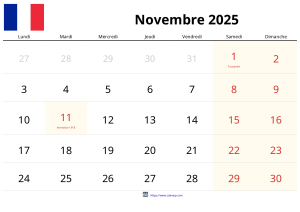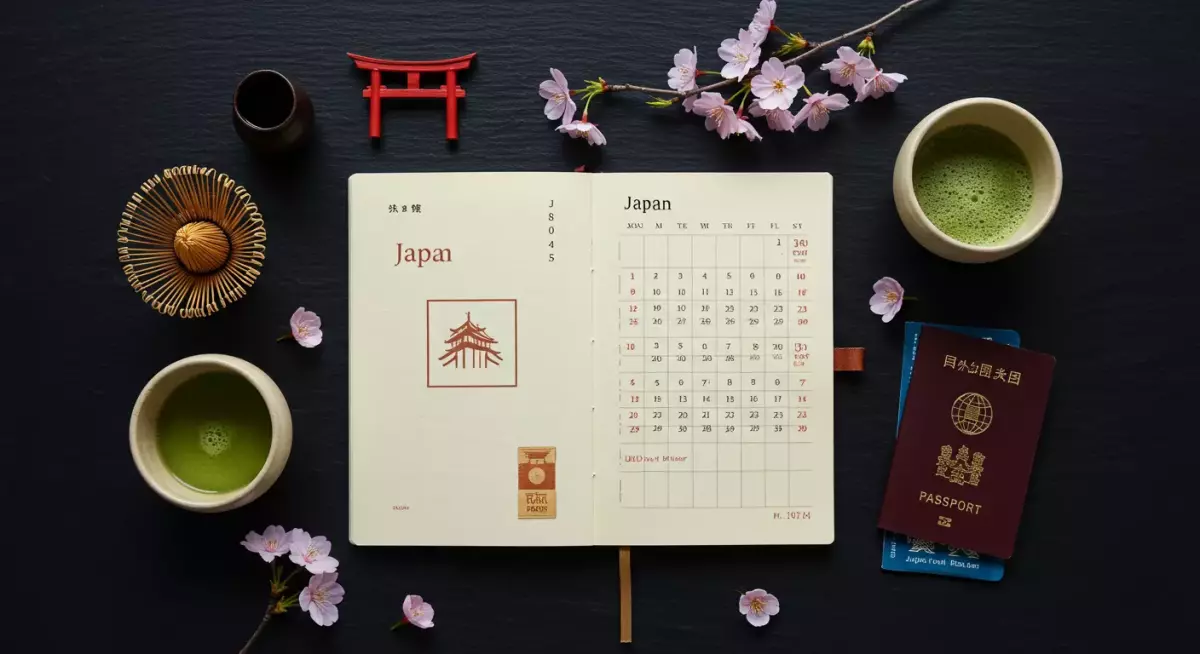Imagine yourself walking under a tunnel of cherry blossoms in Kyoto, crossing the busiest intersection in the world in Tokyo, or finding peace in an ancient temple nestled in the mountains. Japan is a country where ancient tradition and futuristic modernity coexist in perfect harmony. Planning your trip around its holiday calendar is the secret to experiencing this fascinating culture at its peak.
More than just a list of dates, this is your strategic guide to using the Japanese calendar to your advantage. Whether to witness unique festivals, take advantage of quieter travel times, or understand local etiquette, we show you the key dates to turn your dream trip into reality.
The Great Japanese Seasons: When to Travel?
The Japanese calendar is marked by seasons and events of unparalleled beauty. Choosing the right date is the most important decision of your trip.
The Magic of Spring and Cherry Blossoms (March to May)
The "Sakura" (cherry blossom bloom) is Japan's most famous event. Spring offers mild weather and stunning landscapes. This is the peak season.
- Spring Equinox (March): A holiday that celebrates nature and marks the start of the most anticipated season of the year.
- Golden Week (Late April to Early May): A succession of four national holidays that creates the busiest holiday week for the Japanese themselves.
Autumn and the Red Leaves (October to November)
As spectacular as spring, autumn ("Koyo") dyes the landscapes in shades of red, orange, and yellow. The weather is dry and pleasant, ideal for exploring temples and gardens.
- Health and Sports Day (October): A holiday that encourages physical activity, perfect for long walks in parks like Ueno in Tokyo.
- Culture Day (November 3): Many museums offer free entry on this day, a great cultural opportunity.
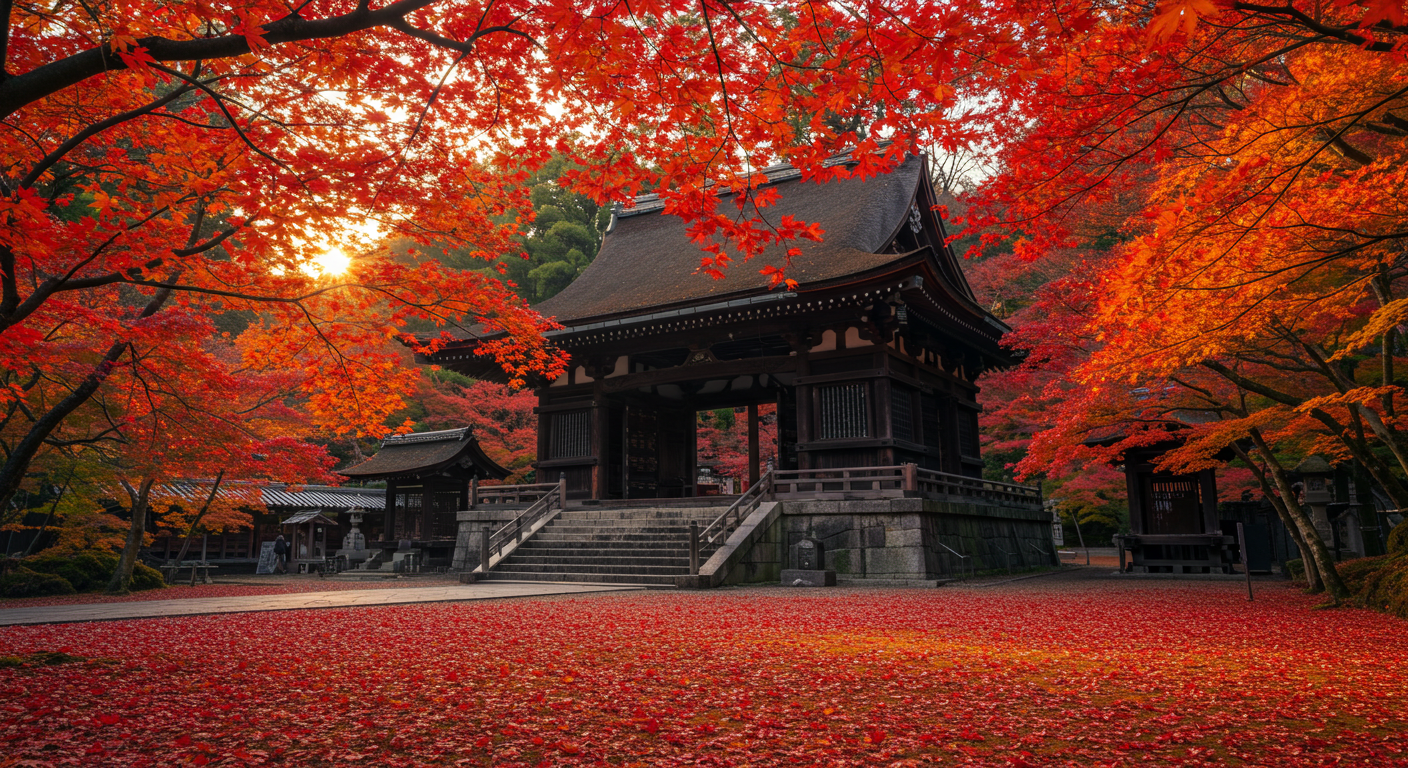
The Sacred Calendar: An Immersion in Religious Celebrations
Shinto and Buddhist traditions deeply shape the Japanese calendar, with festivals ("matsuri") that are a window into the soul of the country.
- Hatsumode (January 1-3): The first visit of the year to a Shinto or Buddhist temple to pray for luck and health. An authentic cultural experience.
- Obon (August): A three-day Buddhist festival to honor the spirits of ancestors. Although it is not a national holiday, many businesses close, and it is a time of heavy domestic travel.
- Shichi-Go-San (November 15): "Seven-Five-Three." On this day, boys aged 3 and 5 and girls aged 3 and 7 wear traditional kimonos and visit shrines to pray for a healthy future.
The Travel Dream: The Shinkansen Experience
For many, a trip to Japan is not complete without one experience: the speed, punctuality, and silence of the Shinkansen. Traveling on the bullet train is not just a mode of transport; it is an immersion in the efficiency and technology that define modern Japan.
Traveling with the Japan Rail Pass
The most economical way for a tourist to explore the country is with the Japan Rail Pass (JR Pass), a ticket that offers unlimited travel on the vast network of JR (Japan Railways). With it, you can travel from Tokyo to Kyoto in about 2 hours and 15 minutes, while perhaps playing on your Nintendo Switch or listening to music with Sony headphones.
Attention to the "Catch": The JR Pass must be purchased BEFORE you arrive in Japan. You receive a "voucher" in the mail, which you then exchange for the actual pass upon arrival in the country. Another crucial detail: it is not valid on the fastest trains of the main line, the "Nozomi" and "Mizuho", but rather on the "Hikari" and "Kodama", which are almost as fast and stop at more stations.
Japan's National Holidays Calendar 2025
These are the official holidays ("shukujitsu") observed throughout the country. Japan is one of the countries with the most holidays in the world.
| Date in 2025 | National Holiday |
|---|---|
| January 1 | Ganjitsu |
| Second Monday of January | Seijin no Hi |
| February 11 | Kenkoku Kinen no Hi |
| February 23 | Tenno Tanjobi |
| Movable Date (March) | Shunbun no Hi |
| April 29 | Showa no Hi |
| May 3 | Kenpo Kinenbi |
| May 4 | Midori no Hi |
| May 5 | Kodomo no Hi |
| Third Monday of July | Umi no Hi |
| August 11 | Yama no Hi |
| Third Monday of September | Keiro no Hi |
| Movable Date (September) | Shubun no Hi |
| Second Monday of October | Supotsu no Hi |
| November 3 | Bunka no Hi |
| November 23 | Kinro Kansha no Hi |
Want the Full Year View?
Access our interactive annual calendar to see all holidays, plan your vacations, and organize your year with the complete vision.
Access the Annual Calendar of 2025Essential Tips for Traveling in Japan
- Buy a Japan Rail Pass BEFORE You Go: As mentioned, the JR Pass is the most economical way to travel, but it must be purchased online before your trip.
- Connectivity is Essential: Rent a "pocket Wi-Fi" or buy a data SIM card right at the airport. Being connected is crucial for using Google Maps and translators.
- The "Konbini" Experience: Convenience stores (konbini) like 7-Eleven or FamilyMart are amazing. They offer delicious and cheap meals, international ATMs, and free Wi-Fi.
Conclusion: Japan, a Journey for the Soul
The Japan Holidays Calendar is your gateway to one of the richest and most fascinating cultures in the world. Using these dates as a guide for your trip ensures that you enjoy not only the temples and neon lights but also the traditions and spirit that make Japan a truly unforgettable destination.

